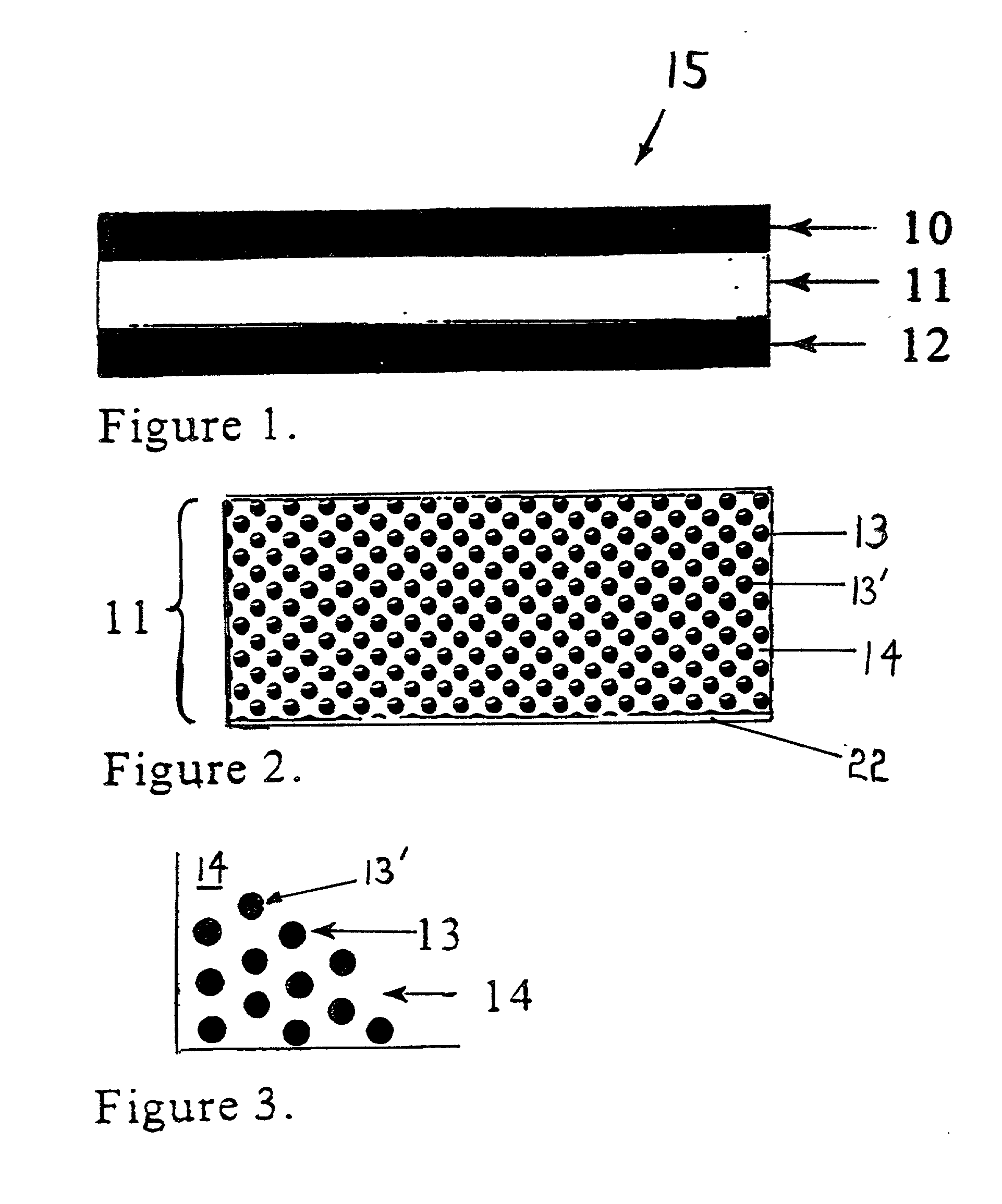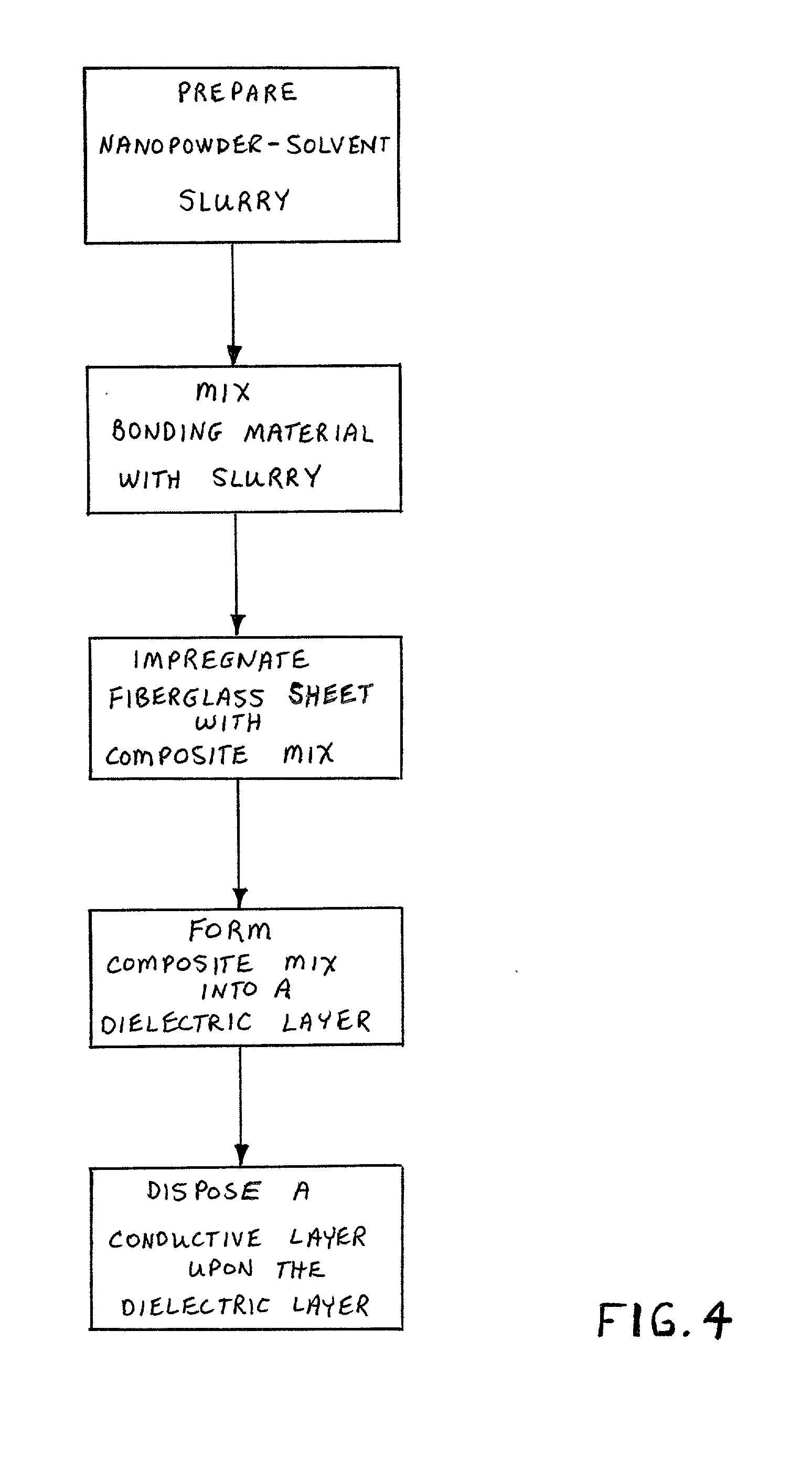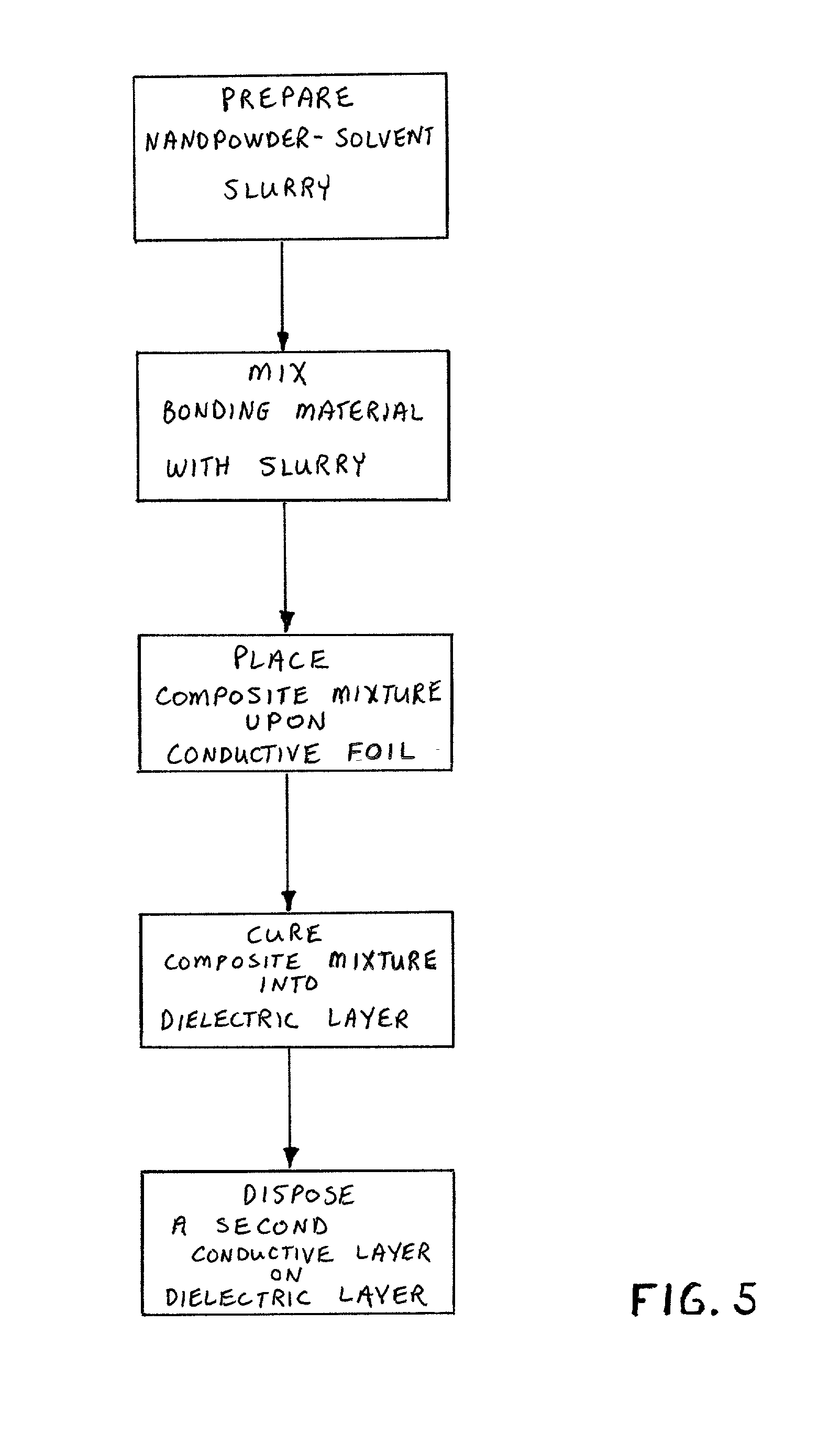Integral capacitance for printed circuit board using dielectric nanopowders
a technology of integrated capacitance and printed circuit board, which is applied in the association of printed capacitors, printed circuit non-printed electric components, adhesive processes with surface pretreatment, etc., can solve the problems of major obstacles to microvia formation, the dielectric layer is unable to withstand substantial voltage, and the dielectric layer is unable to form vias
- Summary
- Abstract
- Description
- Claims
- Application Information
AI Technical Summary
Problems solved by technology
Method used
Image
Examples
first embodiment
[0034] In this first embodiment of the invention, the composite-impregnated fiberglass sheet comprises the dielectric layer 11. Subsequent to the production of the dielectric layer 11 as described above, the conductive layers 10 and 12 are disposed upon one, or usually two sides, of the dielectric layer. This may be done in a lamination press, wherein the conductive layers 10, 12 (e.g. thin copper sheets, each about 1 or 2 mils thick) are pressed against the dielectric layer 11, and the entire sandwiched assembly heated to cause the polymer matrix in the dialectic layer 11 to bond to the conductive sheets. Accordingly, in many applications of the invention, it is desirable to employ a polymer with a relatively low glass transition temperature so that conventional lamination presses can induce the bonding between layer 11 and the conduction sheets 10, 12. Besides the foregoing lamination manner of disposing the conductive layers upon the dielectric layer, alternative modes such as at...
second embodiment
[0037] In the invention, an integral capacitor is created by coating a conductive foil or sheet 12 with a composite mixture which includes a bonding matrix material, solvent, and hydrothermally prepared nanopowders. The preparation of the composite mixture is generally the same as previously described, that is, a nanopowder is suspended in a solvent to create a suspension slurry, and the bonding material, usually a polymer, is mixed with the slurry. Coating of a conductive foil substrate 12 such as copper is performed by physical placement of the composite mixture on the foil and subsequent removal of the solvent. For example, the uncured composite mixture may be extruded onto a conductive layer 12, and then the composite and conductive layer placed into a curing oven for about 10 minutes at about 180.degree. F. In this embodiment, no fiberglass sheet is included in the dielectric layer, rather the composite mixture is by itself cured to form the dielectric layer 11. The dielectric ...
PUM
| Property | Measurement | Unit |
|---|---|---|
| thickness | aaaaa | aaaaa |
| dielectric constant | aaaaa | aaaaa |
| thicknesses | aaaaa | aaaaa |
Abstract
Description
Claims
Application Information
 Login to View More
Login to View More - R&D
- Intellectual Property
- Life Sciences
- Materials
- Tech Scout
- Unparalleled Data Quality
- Higher Quality Content
- 60% Fewer Hallucinations
Browse by: Latest US Patents, China's latest patents, Technical Efficacy Thesaurus, Application Domain, Technology Topic, Popular Technical Reports.
© 2025 PatSnap. All rights reserved.Legal|Privacy policy|Modern Slavery Act Transparency Statement|Sitemap|About US| Contact US: help@patsnap.com



